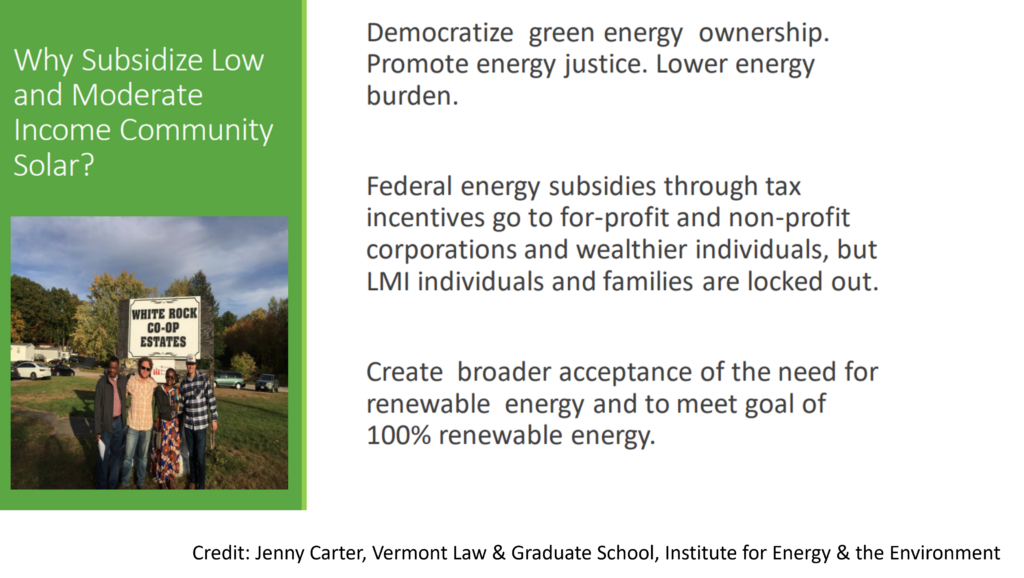As we move to electrifying heating and transportation, keeping electricity costs manageable for low and moderate-income (LMI) households and enabling them to reap the economic benefits of renewable energy is more important than ever. While nationally the declining price of solar has led to greater adoption across the income spectrum, solar adopters are still concentrated with higher income households. Jenny Carter (Vermont Law School), Jim Dumont (Law Offices of James A. Dumont), and moderator Rep. Kate Logan (Vermont General Assembly) dug into how to ensure the transition to renewable energy does not perpetuate existing inequalities in the panel Bringing Greater Equity to Renewables.
Carter shared the valuable role the Community Solar Arrays can play in expanding access to solar energy. As off-site systems that serve multiple customers – whether directly owned by the customers or by an operator that offers customer power purchase agreements – community solar arrays offer access to individuals and businesses that cannot construct on-site solar either because they do not own the site or because it is not suitable for solar. Because dire ownership is out of reach for LMI households and LMI individuals also cannot take advantage of federal tax incentives Carter argued for subsidizing LMI Community Solar projects.

Unfortunately, Carter also highlighted several changes since 2017 that have made Community Solar considerably more difficult in Vermont: declining net metering rates, PUC and DPS hostility, and the introduction of penalties for retaining the Renewable Energy Credits produced by these systems. Future opportunities to jump-start Community Solar include the Solar for All program created by the Inflation Reduction Act and prioritizing the inclusion of solar in new affordable housing projects.
Dumont focused on the need for electricity costs low, as a percentage of income, to support our electrification goals. He pointed out that 74,000 Vermont households below 200% of the Federal poverty level were paying between 11% and 51% of their income on home energy, many times higher than the 6% of income that is often considered the threshold to affordability for energy expenditures. Best practices for LMI ratepayer protection programs include tiered discount programs that limit household electric bills to a specific percentage of monthly income and automatic enrollment for households that qualify for other income-based programs such as Low Income Heating Assistance.
Dumont highlighted H.56, Sponsored by Rep. Cores, as a measure that would bring Vermont in line with these best practices and that would bring low-income rate protection to all Vermonters, regardless of their utility.
See Carter’s slides and Dumont’s outline.
